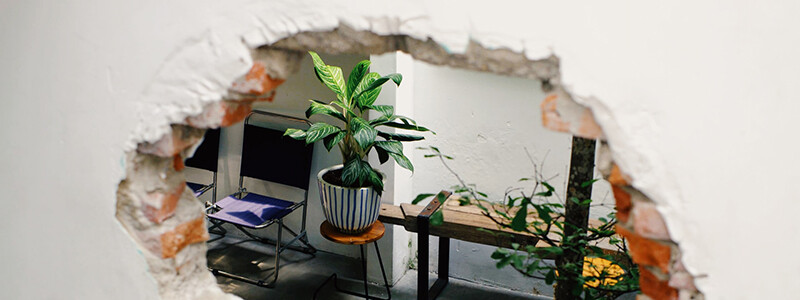Wear and Tear vs. Damage – What Every Landlord Needs to Know
When it comes to maintaining a home, property owners who want to rent their homes to tenants face a different set of challenges. How do you keep the property in good shape if someone else is living in it, and who is responsible if something happens to the property? In this article, we will discuss the differences between wear and tear vs. damage and cover the most important things that every landlord needs to know when assessing these issues.
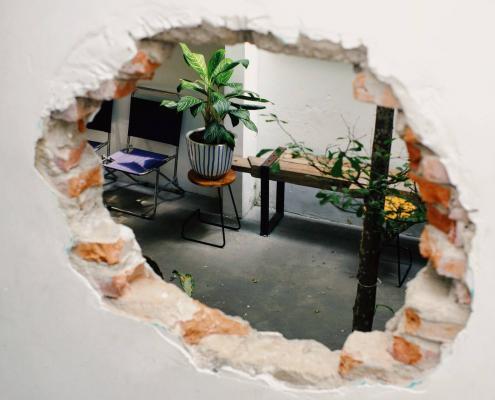
Hole in the wall caused by tenant damage.
Let’s begin by clarifying a few things and accurately defining what constitutes normal wear and tear vs. actual property damage. Although they may seem similar to a layperson, we can differentiate between them by how they occur and by who should foot the bill.
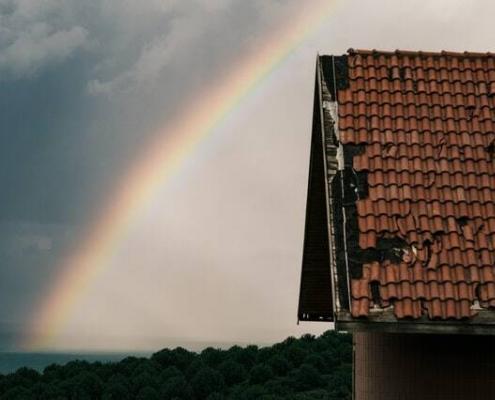
You can’t expect your property to be in pristine condition forever.
What is wear and tear?
Normal wear and tear can be looked at as the small changes which are going to occur to a property no matter what. Of course, wear and tear can be accelerated if someone is living in the residence. And it can happen even in vacant homes due to natural decay.
A good example of natural decay would be the fading or discoloration of wooden surfaces after prolonged exposure to sunlight. Paint will also fade and crack over time. As you can see with these examples, neither are the result of anything tenants may have done so it would be inappropriate to blame them for the wear. On the other hand, reasonable wear and tear can easily become unreasonable wear and tear if there are a large number of residents in the home. This is especially true in homes with hardwood floors where the tenants have a greater than 60 pound pet. However, you can always expect reasonable wear and tear no matter how careful your tenants may be.
Wooden surfaces will deteriorate over time, but not using a coaster will make it happen faster.
To summarize, normal wear and tear can occur without any negligence or misuse on the part of the tenant.
Addressing normal wear and tear will always be the responsibility of the homeowner and under normal circumstances, tenants cannot be charged the cost of remediation. Accelerated or unreasonable wear and tear however may have been the result of tenant irresponsible usage or neglect and the cost to repair should be borne by the tenant. Keep in mind that it is the responsibility of the tenant to report maintenance issues before they escalate and become something that can be considered damage to the property.

Wooden surfaces will deteriorate over time, but not using a coaster will make it happen faster.
To summarize, normal wear and tear can occur without any negligence or misuse on the part of the tenant.
Repairing normal wear and tear is the responsibility of the landlord. Under normal circumstances, they cannot charge the tenants for those repairs, nor can they deduct them from the tenant’s security deposit. However, if wear and tear occurred in an unusually fast period, it may have come from irresponsible use or neglect. It is the responsibility of the tenant to report wear and tear before the effects escalate and grow into something that can be considered damage to the property.
What is damage?
Here we have every other change to the property that shouldn’t naturally occur. If we look at our above examples, their opposites would be wooden floors scratched or warped from water damage and tenants making scuffs, scratches or gouges on the walls.
Anything preventable which depreciates the property can also fall under the purview of damage. If left unattended and neglected long enough however, even something that could be categorized as normal wear and tear can eventually be considered damage. A good example of this would be water intrusion in the bathroom caused by a preventable but unreported leak. If left untreated, it could cause stains as well as the buildup of mold and mildew which would definitely be considered damage.
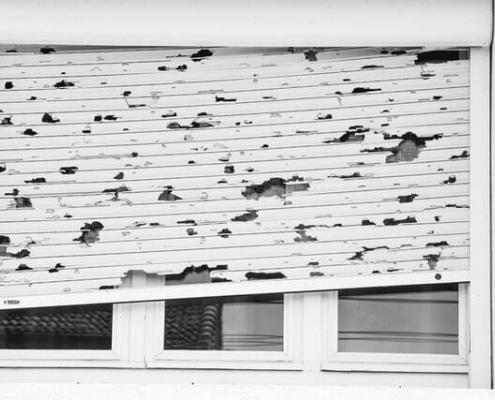
Although the tenants didn’t cause the hail damage, they should report it.
Damage is property deterioration which has resulted from neglect, misuse, accident, or negligence. If you are still struggling with the difference between normal wear and tear and damage, we have a handy outline in our Tenant Handbook which features multiple side-by-side examples.
What to do when wear and tear or damage occur?
As we’ve outlined above, repairs for property damage can typically be charged to tenants or deducted from their security deposit. We do understand that not every owner wants to confront their tenants about damage they have caused which is why we’ve highly recommended hiring a property manager to do this for you.
However, as a landlord, you should understand that taking care of the effects of ordinary wear and tear is your responsibility. To handle the cost of these repairs, you should plan your budget in advance. Be sure to take into account the average lifespan of the property’s fixtures, systems and appliances so that you have a good idea of when they’ll need replacing.
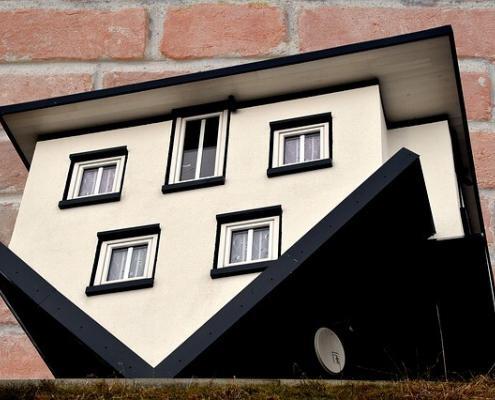
Sometimes, it feels like your whole property is upside down from the damage it has suffered.
How to avoid damage to your property
Although tenants must be held responsible for any damage they have caused, below are some useful suggestions which should help you minimize harm to your most valuable asset.
1. Have a home inspection.
Traditionally home inspections are performed for both move-ins and move-outs. This will let both you and your tenant examine the property and determine if the current state matches the initial condition.
2. Use a checklist.
While performing the inspection, it’s best if you use a checklist so that you don’t forget to go over every part of the property.
3. Support tenants in maintaining the property.
Incentivize your tenants and give them benefits if they keep the property in good condition. Good tenants are something to hang onto.
4. Encourage tenants to report any maintenance issues.
Foster good communication so that problems can be dealt with before they escalate and cause actual damage.
5. Walkthrough inspections.
You don’t need to surprise your tenants. It’s okay to let your tenants know in advance and schedule your visits.
6. Avoid deferred maintenance.
Come to terms with the fact that nothing will last forever and don’t wait until the last minute to fix or replace something that is broken or damaged. Be present when the tenants move in and when they are moving out.
Although some tenants may do the moving themselves, the majority will use a moving company. Regardless of how careful tenants or professional movers might be, they may cause the occasional scratch, scuff, dent or other damage while moving in or out. It’s important for you to be there to document this.
7. Encourage tenants to use care when moving in/out
By hiring a professional moving company, tenants can avoid unnecessary damage during the move. Keep your property safe by leaving the heavy lifting to the pros.
The bottom line
We hope that you can now tell the difference between wear and tear vs. damage since every landlord needs to be able to differentiate between the two. It is very important to stay calm and to know what to do when damage does take place. Talk to your tenants about their responsibilities and help them understand what they can do to prevent damage from occurring. This will save you both a lot of time and stress.
If you are ready to rent your home, feel free to take advantage of our exclusive FREE Rental Market Analysis. Also, check out other relevant reads like How to Keep Tenants From Damaging Your Home. Finally, don’t forget to connect with us on social media! Follow us on Facebook, Twitter, LinkedIn, Instagram, and Pinterest for tips, ideas and updates.

